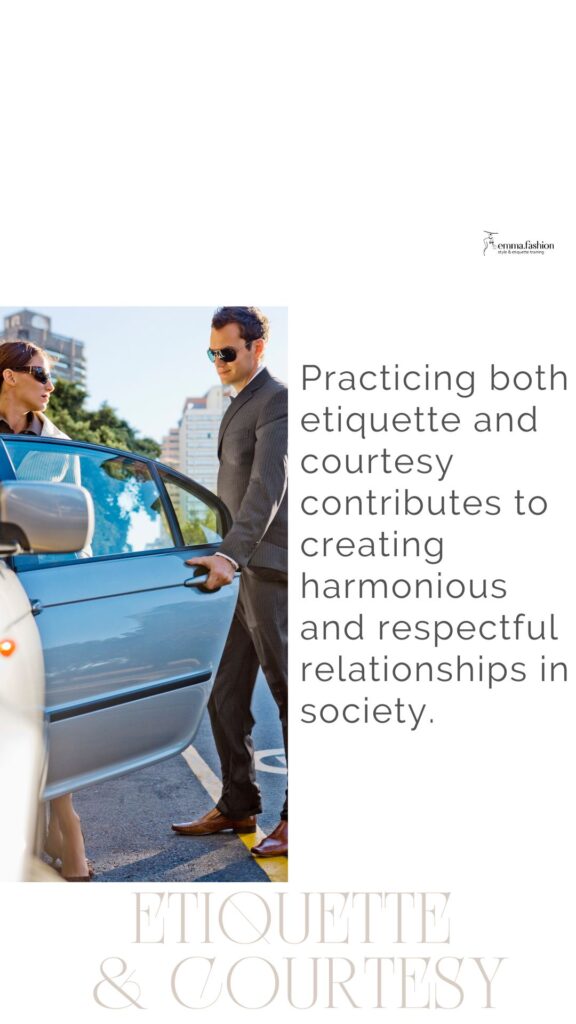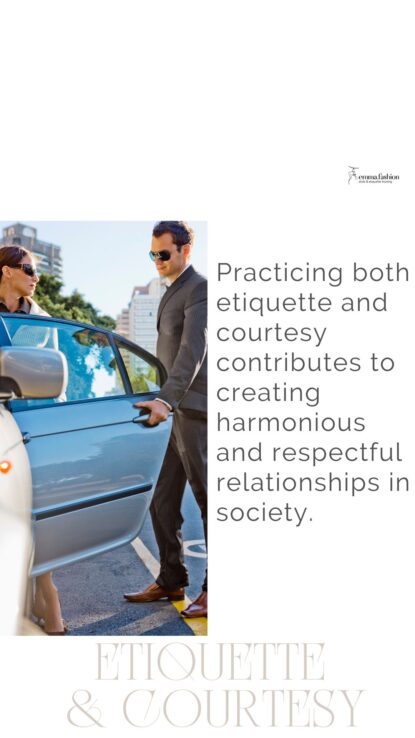The Gentle Art of Courtesy: Etiquette in a Modern World
Nothing about etiquette is actually required… but it’s courtesy.
Nick Leighton
In a world where the pace of life often emphasizes efficiency and practicality, it’s helpful to remember the importance of courtesy. While nothing about etiquette is legally required, its impact on relationships and connections can be significant, for instance, by helping us maintain harmonious social dynamics. By embracing etiquette as an instrument of courtesy, we uphold traditions and contribute to a more respectful and connected society.
Etiquette and courtesy are related concepts, often used interchangeably, but they have distinct meanings and implications in social interactions.
What is Etiquette?
- A set of socially acceptable behaviors and practices that have evolved over centuries to guide individuals in various social situations.
- These “rules” have been established to ensure smooth interactions and minimize misunderstandings.
- While these rules may not be mandated by law, they have become ingrained in cultural norms as a means to facilitate positive connections.
- Etiquette provides a framework for how people should behave, speak, and interact in order to facilitate smooth and respectful communication and relationships.
- Etiquette encompasses a wide range of behaviors, from how to address someone properly to how to conduct oneself in formal events, business settings, and everyday interactions.
What is Courtesy?
- Courtesy goes beyond following specific rules and extends to an attitude of kindness and thoughtfulness in interactions. confident in her skin.
- It involves being aware of others’ feelings and needs and acting in a way that demonstrates empathy and understanding.
- Courtesy often manifests in small gestures, such as saying “please” and “thank you,” holding the door for someone, or listening actively when someone speaks.

The key differences
Scope & Attitude
- Etiquette focuses on adhering to established social norms and rules.
- Courtesy emphasizes an overall attitude of kindness and respect.
- Etiquette is more rule-based and context-specific.
- Courtesy is a broader principle that can guide behavior in a wide range of situations.
Flexibility
- Etiquette tends to be more rigid and specific, varying between cultures and contexts.
- Courtesy is adaptable and can be practiced universally, regardless of cultural or social differences.
Choice vs. Requirement
- While etiquette often involves adhering to societal norms, courtesy is a choice.
- People can choose to be courteous, and it doesn’t necessarily involve following strict guidelines.
- Courtesy is motivated by a genuine desire to treat others well and make interactions more pleasant.
Underlying motivation
- Etiquette can sometimes be followed out of obligation or to conform to social standards.
- Courtesy is driven by a sense of genuine care and consideration for others.
In essence, etiquette provides a structured framework for behavior in various situations, whereas courtesy is a foundational principle that underlies positive and respectful interactions. While etiquette can facilitate courtesy, it’s possible to exhibit courtesy without adhering to every aspect of formal etiquette. Ultimately, practicing both etiquette and courtesy contributes to creating harmonious and respectful relationships in society.





Comments